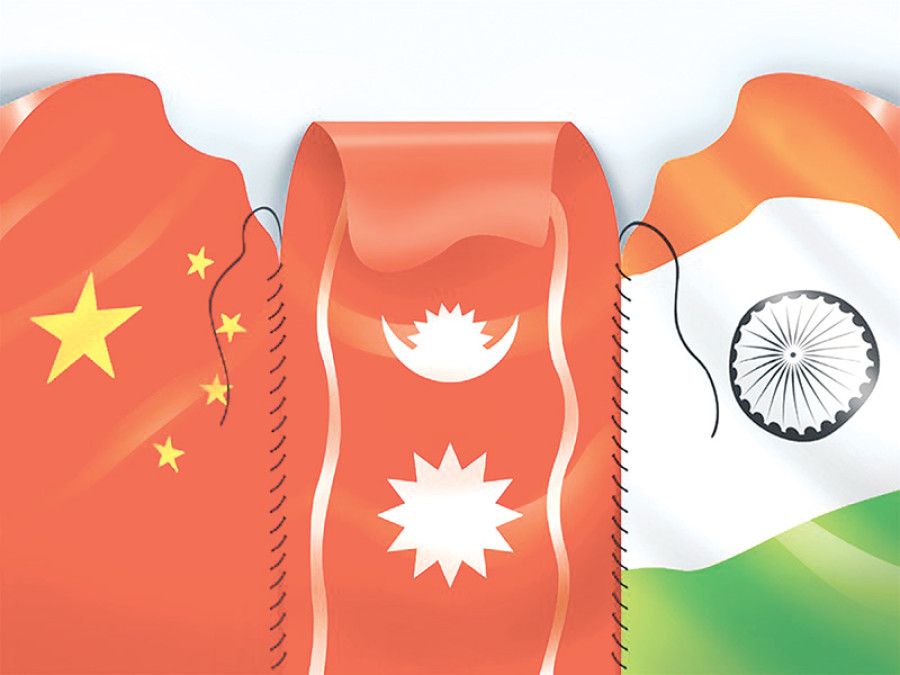Opinion
Modi-Xi yin yang
Nepal has in the past lacked the acumen and strategy to bring both India and China on-board in cooperation
Achyut Wagle
Chinese President Xi Jinping and Indian Prime Minister Narendra Modi held an ‘informal summit’ meeting in the city of Wuhan in Hubei province of central China on April 27-28, 2018. The Chinese choice of Wuhan was more due to symbolic significance than arbitrary selection. It was in Wuhan where the founder of the People’s Republic of China Mao Zedong hosted US President Richard Nixon in 1972 for their historic meeting which heralded a new era in US-China trade relations. It may be recalled that the US and China were not even on talking terms after Mao’s communist party took over and annexed Tibet. The trade between the two countries stood at a mere $4.7 million in 1972 as against $636 billion in 2017, with a surplus of $367 billion in favour of China.
Proverbial paradoxes
Modi and Xi at present are forced to work through analogous yin yang—the Chinese idiom for proverbial paradoxes and contradictions. The Sino-Indian relations are now marked by several oddities and ostentations, as well as opportunities. China is India’s largest trade partner with bilateral trade of $88.44 billion in 2017, out of which Indian exports were limited to $16.34 billion. This rapidly widening trade deficit is certainly a concern for India. More than that, the growing economic and strategic influence of China in the South Asian sub-continent, particularly through its Belt and Road Initiative (BRI) has threatened to skew the sphere of influence that India deems to have traditionally enjoyed. Incidents like the Doklam military stand-off last year in the Bhutan-India-China tri-junction and China’s known friendship with India’s arch enemy, Pakistan, mainly owing to the ambitious $66 billion China-Pakistan Economic Corridor, often raises grave security concerns in India.
Yet, Prime Minister Modi and President Xi have met about a dozen times over the last four years since the former’s election to power. Both have paid official state visits to each-other’s country and met at the side-lines of several international conferences and forums. Both of these nations are members of the Brics (Brazil, Russia, India, China and South Africa) club and the Shanghai Cooperation Organisation, among several others. They are also the two fastest growing major economies of the world. China and India are thus poised to become the first and third largest economies of the world respectively, within the next decade. Therefore, their level of cooperation, competition or conflict is critical to regional, continental and global stability, peace and progress. This was exactly the reason why Modi’s latest, rather surprising sojourn to China was globally viewed as an event of high diplomatic and economic interest.
Watershed moment
The Modi-Xi summit has been portrayed by Indian media and intelligentsia as the third watershed moment in the modern history of Sino-Indian diplomacy. The first such moment was when Jawaharlal Nehru visited China under Mao’s iron-fisted rule in 1954 by recognising the latter’s communist takeover of China as ‘different modes of independence movements in the two different countries.’ That led to a very short-lived euphemism of ‘hindi-chini bhaibahi (India and China are brothers)’, which was shattered by the 1962 war between the two Asian giants. The second was Indian Prime Minister Rajiv Gandhi’s official visit in 1988 when Deng Xiaoping was crusading to open the Chinese economy to the world. It was the first such exchange at the prime ministerial level since India provided shelter to Tibetan religious leader Dalai Lama in Dharmashala in 1959, which was met by China’s anger.
Brushing aside all high level contacts between 1988 and now, Modi’s current visit has been labelled as the third crucial diplomatic adventure, principally for three reasons. One, India is under unprecedented duress, not only because India’s trade deficit is ballooning year-after-year and the competitive edge of hundreds of its products in the international market is severely blunted by cheap Chinese products, but because the boundaries of Indian influence are also being tested. China, through its overarching BRI, has emphatically set foot in Sri Lanka, Bangladesh, Maldives, Myanmar and, possibly Nepal. Two, Xi, in terms of exercising absolute power of state has put himself on Mao’s pedestal. It is increasingly becoming obvious that without establishing functional rapport with him, any future deals with China will be difficult. As China’s BRI now becomes the major vehicle for its economic diplomacy with 65 countries of the world already in the loop, India cannot remain aloof just because Pakistan happens to be one of those 65 countries. And three, whether one likes it or not, due to the sheer size of the Chinese economy and its finesse in mercantilism, India has no means of competing with or confronting China. The only available alternative is to cooperate and share the geo-strategic space, to whatever extent possible, in South and South-East Asia in particular. In this evolving context, Modi seems to be keen on charting out a joint roadmap of cooperation mainly to share a geopolitical space in the immediate neighbourhood of the sub-Himalayan and pan-Indian Ocean regions.
Nepal’s obsessions
Needless to say, Nepal, located right in the middle of these two superpowers would arguably be the first country to be impacted by the changes, for better or worse, in their relations. But, it is also a fact that Nepal is, more often than not, unnecessarily obsessed by the ebb and flow of Sino-Indian relations. Nepal severely lacks preparedness and alternative strategies to shift its diplomatic paradigms when India and China bask on sunny days in their relationship or vice-versa. It is but natural that when leaders of two countries meet, they tend to be primarily engrossed in advancing their own interests. Modi’s latest visit to China also could not have been an exception. Nepal barely figured in to the main conversations.
The foreign policy of the incumbent KP Oli government appears to have been more reliant on the assumption that India and China were less likely to cooperate, and that Nepal could probably benefit better from a slight pro-China tilt. There are other forces that believe that retention of a pro-Indian approach is safer. Nepal has often internally debated on the imperatives of China-Nepal-India cooperation. But we lacked the required acumen and strategy to bring both China and India on board this cooperation narrative. Instead, Nepal is left at bay when the other two nations set out to forge new cooperation strategies which may have overbearing long term implications.




 8.12°C Kathmandu
8.12°C Kathmandu










